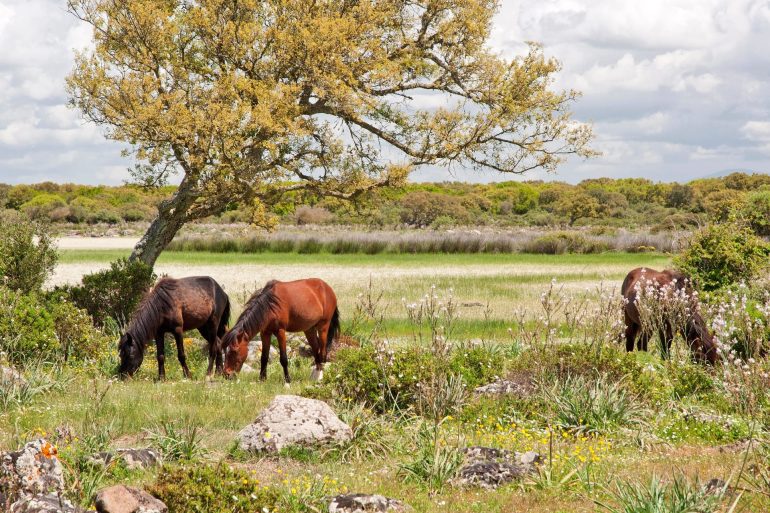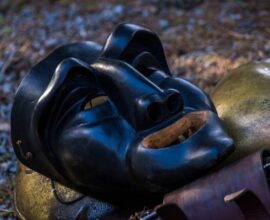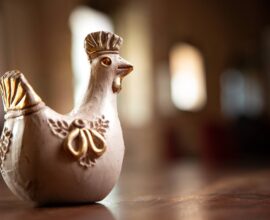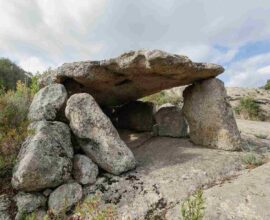The suggestive Giara di Gesturi in the heart of Sardinia
Giara di Gesturi: a wonderful corner of Sardinia
Sardinia is an island rich in naturalistic treasures. Among the unmissable places to visit there is certainly Giara di Gesturi.
Giara di Gesturi, or Sa Jara Manna, is a basalt plateau in the central-southern part of the island. It is located west of the Gulf of Oristano, between Marmilla, Trexenta, Sarcidano and Arborea, about 60 km from Cagliari.
The name ‘Giara’ derives from the Latin ‘glarea’ which means ‘gravel’, referring to the stony soil. The adjective ‘manna’ (large) is used to differentiate Giara dei Gesturi from the nearby smaller ones of Serri and Siddi. The plateau is at 550 m a.s.l. and the highest points are Zepparedda (609 m a.s.l.) and Zeppara Manna (580 m a.s.l.). It covers approximately 4400 hectares, of which 2000 belong to the municipality of Gesturi, 1600 to that of Genoni, 450 to Tuili and 250 to Setzu.
More in detail, Giara dates back to about 2 million years ago. A that time, the end of the Miocene, the sea retreated due to tectonic movements. In the following period, the Pliocene, the craters of Zepparedda and Zeppara Manna emerged. Later, with two eruptions, 700 years apart, they covered the entire area forming a large basaltic plain. The plateau, due to the abrasive action by atmospheric agents and water courses on the hills surrounding Sa Jara Manna, is now on an elevated position compared to the surrounding area. This is due to what geomorphologists call “inverted relief” or “topography inversion”.
The position and the particular conformation of the Giara, together with the mistral wind, give life to a unique vegetation. It mainly includes lush woods and Mediterranean scrub but also garrigue, grasslands and paulis. The latter are undoubtedly the most interesting environments of the plateau.
Indeed, paulis are marshes that collects rainwater. There are about thirty of them, of different sizes, with a depth that varies between 30 and 100 cm. They host numerous species, such as the Sardinian tree frog and the green toad. In spring they are always covered with a mantle of white aquatic buttercups. Also the Lepidurus Opus Lubbocki lives in the paulis. This is a particular crustacean which genetics have been the same for 200 million years. Usually, it can be seen on beautiful spring days.
The Mediterranean scrub is characterized by shrubs such as the marine cistus or Montpellier cistus, the mastic whose resistant and flexible branches were used for the manufacture of baskets, the strawberry tree, the myrtle from which the famous liqueur is obtained, the wild pear, the blackthorn and the fragrant helichrysum. On the other hand, the garrigues are mainly composed of wild mint and ephorbia, while in the prairies the asphodel dominates.
On the plateau, the pinnettas are still visible. These are the typical old pastoral buildings of Sardinia, similar to the ancient Nuraghic huts. Cool in summer and warm in winter, the pinnettas have a circular stone base and a cover of holm oak trunks, cistus branches (which are impermeable to water but permeable to air) and mastic. People used to replace the cover approximately every 10 years. In the center of the hut was the hearth, next to which the shepherd smoked meat, made cheese and ate. Outside there were structures for goats or pigs. People abandoned the pinnettas in favor of the Su Mesoni, larger and more comfortable buildings with a rectangular plan.
But the numerous Domus de Janas on the slopes of the plateau and the remains of pottery, flint and oxidania, show that people were already living in Giara di Gesturi during the Neolithic. In the area there are also numerous Nuragic towers, probably belonging to the majestic Nurage of Barumini “Su Nuraxi”, not far from the Giara. Moreover, are the remains of some Punic and Roman settlements, such as the two important military centers of Bruncu Suergiu di Genoni and of Santa Luisa di Tuili.
The Giara horse: a symbol of the territory and of the entire island
Giara di Gesturi is the habitat of the famous Giara horse (acheta, akkètta or cuaddeddu in Sardinian language). This is an endemic breed that lives in the wild. According to some scholars, the Phoenicians introduced it in Sardinia during the Iron Age. However, another theory says that the Giara horse, with its indomitable and restless character, descend from the wild horse present in Sardinia since the Neolithic, as 6000 BC fossils show.
In the Middle Ages this particular species was widespread throughout the island. Unfortunately, the intensification of agricultural exploitation, the use of horses for the threshing of wheat and crossbreeding has caused their disappearance in almost all of Sardinia. The only exception are Giara di Gesturi where about 600 specimens live. A few other areas are Mount Arci, the Capo Caccia nature reserve in Alghero and the Burgos forest in the province of Sassari.
The peculiarity of the Giara horse is the average height at the withers of about 120 cm. The weight varies between 150 and 200 kg. A tuft that descends along the forehead partially covers the almond-shaped eyes. The head is square, the neck is sturdy and the junction of the tail is low. The coat is of three types: reddish with black mane and tail; completely dark; chestnut with a red hue and a blond mane and tail.
But the cuaddedus are not the only animals that populate the Giara di Gesturi. In fact, the plateau is also home to wild boars, foxes, wild cats, martens, weasels and hedgehogs. In addition, the Giara is also home to sedentary, migratory, aquatic and terrestrial birds, such as the great spotted woodpecker, the jay, the bee-eater, the Sardinian partridge, the crow, the blackbird, the Sardinian magnina and the shrike. Finally, there are also birds of prey such as the buzzard, the Sardinian goshawk and the kestrel, as well as the raven and the knight of Italy.
Do you want to visit the Giara di Gesturi and live a dream vacation in a true paradise? Discover the Forte Village Resort in Sardinia.






